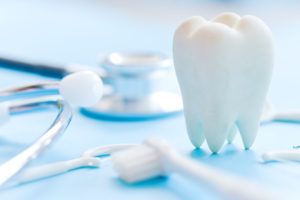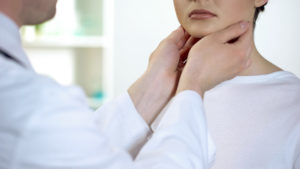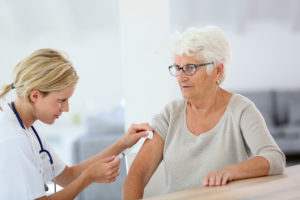 If you are worried that dental work during pregnancy negatively affects the fetus, remember it is exactly the opposite! Dental care before and during pregnancy actually guarantees both your and your baby’s well-being. Hormonal changes that occur during pregnancy cause the gums to swell and bleed, which may lead to trapped food causing increased irritation to your gums while also increasing the risk of gum infections.
If you are worried that dental work during pregnancy negatively affects the fetus, remember it is exactly the opposite! Dental care before and during pregnancy actually guarantees both your and your baby’s well-being. Hormonal changes that occur during pregnancy cause the gums to swell and bleed, which may lead to trapped food causing increased irritation to your gums while also increasing the risk of gum infections.
What is safe to do?
All emergency and regular dental treatments by family dentistry such as cavity fillings, crowns, root canals, tooth extractions, and dental cleanings can be done during pregnancy. It is recommended to complete such dental work, as well as have regular check-ups, since it helps reduce the risk of infections and gum disease. You can see here to get to a dentist to have your teeth checked and more.
Dental work will be easier to do during the second trimester, as the first trimester is the most critical in the development of the fetus and it may be challenging to lay on your back for an extended period of time once in the third trimester. You can get dental implants after your first trimester. However, it is better to wait until delivery. If you need to get them, take expert advice from Cutting Edge Periodontist providing all on 4 dental implants. Make sure that you know everything about it to avoid complications.
Cosmetic procedures such as teeth whitening and elective treatments should be postponed until after the baby has been born to avoid exposure to any risks. You can avail the best cosmetic dentistry at Eccella Smiles post-delivery.
Morning sickness and rising hormone levels put you at risk for periodontal disease and tender gums—also called pregnancy gingivitis. Follow regular oral hygiene procedures, but you may want to consider using flavor-free toothpaste and/or mouth rinse. Expert advice like what you will find out here regarding the right dental products can help. You can rinse out your mouth with just water if you have frequent vomiting. Consult your dentist for suggested brands of toothpaste, mouth rinse, and other products.
Anesthesia, Medications, and X-rays
Lidocaine is most commonly used to induce anesthesia during dental work. Though it does cross the placenta once administered, studies have not yet suggested definite adverse effects. The anesthesia you receive should be as little as possible, but it is most important for you and your baby to be stress-free and comfortable.
Antibiotics that may be prescribed during dental work to avoid infections, such as penicillin, amoxicillin, and clindamycin, have not been proven as posing a risk to the fetus.
Most x-rays used in dental diagnoses do not have a radiation level high enough to cause any problems; your dentist should take appropriate care to shield your abdomen and thyroid.
More

When does it happen?
Menopause symptoms occur at the end of the body’s menstrual cycles, usually when women reach their 40s or 50s; perimenopause begins a few years before menopause. Some women may experience menopause as late as their 60s. The average age in the US is 51 and the most common reason is the natural biological decline of reproductive hormones. Menopausal age varies and procedures such as chemotherapy and/or radiation, hysterectomy, or primary ovarian insufficiency can lead to early menopause.
Perimenopause Symptoms
Experiencing the following, additionally to irregular periods, alerts you that your body is in perimenopause:
- Vaginal dryness and irritation
- Hot flashes and chills
- Night sweats
- Problems sleeping
- Mood changes
- Slowed metabolism and weight gain
- Thinning hair and dry skin
- Loss of breast fullness
- Thin bones
Period irregularity does not guarantee you are in menopause, so until you are sure do not stop using contraceptive methods. Your ovaries are still producing eggs, even though your hormone levels are changing.
Menopause
Leading up to menopause, you will experience changes in menstruation, with period irregularity that includes either heavier periods or periods that skip for a month or more than return regularly for a few months. Once you have gone 12 months without menstruating, your body has gone into menopause.
Treatment
There are different types of treatment available to ease menopausal symptoms.
Menopause hormone therapy (MHT) is one of the most common treatments, though it is not safe for all women. You should always consult your healthcare provider, and avoid MHT if:
- You think you are pregnant
- You have had certain types of cancer, blood clots, a stroke or heart attack
- You have liver disease or problems with vaginal bleeding
Non-hormone treatments approved by the FDA are also an option, especially when it comes to easing the symptoms of severe hot flashes and pain with sexual activity (dyspareunia).
Natural methods such as dietary supplements or over-the-counter natural hormone creams may be used to alleviate some menopausal symptoms.
Every treatment method has advantages and disadvantages, and there is no one-fits-all solution to dealing with menopause. Always consult your healthcare provider before pursuing treatment and be knowledgeable about potential risks.
After Menopause
Some of the symptoms may continue after menopause, such as vaginal dryness and changes in sex drive; seek methods that will help you protect your heart and prevent bone loss. Postmenopausal vaginal bleeding should not occur, and if it does it may be a sign of a medical issue that requires urgent attention.
More

Autoimmune diseases are a group of more than eighty chronic, often disabling, illnesses. These diseases are caused by underlying defects in the body’s immune system, which is a complex network of cells and organs that defend the body from outside invaders such as bacteria, germs, and viruses. While these disorders are not limited to the female population, they disproportionately affect women. Nearly 80% of those affected by autoimmune diseases, about 8% of the U.S. population, are women.
The immune system functions by differentiating between what is normal for the bodily system and what is an outsider. An autoimmune disorder causes the body to create autoantibodies that attack normal cells by mistake while regulatory T cells fail to correct the immune system imbalance. When this happens, the immune system is attacking the body from within.
Who is at risk?
Autoimmune diseases can affect anyone; researchers have identified certain risk factors. Women of childbearing age are most at risk for autoimmune disorders. Those with a family history of autoimmune disorders, especially lupus and multiple sclerosis, are more susceptible to them. Certain environmental factors, such as sunlight, chemical solvents, and bacterial and viral infections are linked to some autoimmune disorders.
What are the most common autoimmune disorders?
While there are many autoimmune disorders that affect women, four of the most common and debilitating are multiple sclerosis (MS), lupus, rheumatoid arthritis (RA), and scleroderma.
- MS affects 250,000 to 350,000 people in the U.S., almost twice as many women as men. It causes varying degrees of neurological impairment, such as paralysis, tremors, lack of coordination and balance, and numbness and tingling in extremities. While symptoms are treatable, there is no cure or definitive cause.
- Lupus is a chronic inflammatory autoimmune disease that can affect the joints, skin, blood cells, heart, and lungs. It can also cause fever, weight and hair loss, fatigue, rashes, headaches, and dizziness. Out of the 1.5 million people afflicted with lupus in the U.S., 90% are women, and it is more common in black, Hispanic, Native American, and Asian women than Caucasian women.
- RA affects about 1.3 million people in the U.S., twice as many women as men. It is an inflammatory disease that causes pain, swelling, stiffness, swollen and deformed joints, and reduced movement and function. It may also be accompanied by fatigue, fever, weight loss, eye inflammation, anemia, and lung disease.
- Scleroderma entails an overproduction of collagen in the skin and blood vessels, leading to an abnormal growth of connective tissue that can interfere with the functioning of affected organs. Additional symptoms include thickening of the skin, pain and stiffness in fingers and joints, shortness of breath, and diarrhea or constipation. More women than men are among the 40,000 to 165,000 affected by scleroderma in the U.S.
While there are no cures to these and other autoimmune diseases, there are types of both over-the-counter and prescription medications that relieve symptoms, replace vital substances the body cannot make on its own, and suppress the malfunctioning immune system. Patients also utilize various alternative treatments, such as herbs, chiropractic treatments, acupuncture, and hypnosis. Women should be encouraged that even though their autoimmune diseases might not go away, the conditions can be managed and should not prevent them from living full, active lives.
More

With the average age of first-time mothers on the rise, many women are waiting until their mid- to late 30s to begin trying to get pregnant. While conceiving after 35 is still very possible, there some issues to take into account. Less frequent ovulation is the most common age-related issue with conception. With time, the number and quality of eggs decreases. Other health issues in women over 35—such as prior surgery or infection that may have caused scar tissue, endometriosis, fibroids, and chronic issues such as high blood pressure and diabetes—also makes conception more difficult. Miscarriages are more common in women over 35 as well.
While this may seem overwhelming, there are many things you can do to make the process go smoothly:
- Set realistic goals: It takes an average of one to two years for women to conceive after 35, so be prepared and manage expectations accordingly. Do not put too much energy and focus into each cycle. While it’s harder said than done, try keeping it as a back-burner goal.
- Be healthy: Diet and exercise can play a huge role on your overall life—including well-being, stress levels, chronic conditions, and more—all of which contribute to your body’s ability to conceive. There’s no time like the present to eat better and get exercise! Aim for 30 minutes of moderate activity five times per week. This includes walking, biking, flow yoga, swimming, and more. Also work hard to make healthy food choices, with a focus on five servings of fruit and vegetables each day, along with lean meats and whole grains.
- Make a pre-conception doctor appointment: When you are getting close to being ready, it’s the right time to talk with your doctor. At this visit, go over your medical history, current medications, and lifestyle. It’s never too soon to get in better shape—mentally and physically.
- Seek at-home screening: Both women and men can take an at-home fertility test to initially gauge fertileness. While less thorough and conclusive than tests at your doctor’s office, at-home screening often provides peace of mind at a lower cost.
- Pick up an ovulation kit: Women typically ovulate 14 days before they get their period. However, some women experience irregular cycles, making ovulation kits useful. Women release a hormone called luteinizing roughly 24 to 48 hours before ovulation. Ovulation kits test for that hormone to narrow in on a more likely conception window.
- Track your cycle digitally: While, of course, anyone can take out a pen and a calendar to keep written track of their period, but, like most analog activities, there’s an app for that. Fertility apps track your cycle to let you know your most fertile days based on past periods. Additionally, many activity monitoring apps, such as Fitbit, include a fertility tracking option.
When to see your doctor:
- The six-month mark: Typically, it’s best to try for six months before enlisting the help of a specialist or seeking advanced fertility testing.
More
 Your thyroid is a small gland that is critical for regulating a variety of bodily functions. Several conditions can affect the thyroid and cause a variety of complex symptoms. If you believe you may be experiencing any of the thyroid problems described below, make an appointment to speak with your doctor.
Your thyroid is a small gland that is critical for regulating a variety of bodily functions. Several conditions can affect the thyroid and cause a variety of complex symptoms. If you believe you may be experiencing any of the thyroid problems described below, make an appointment to speak with your doctor.
Hypothyroidism
A condition marked by an underactive thyroid that affects approximately 4.6 percent of people 12 years old and older. When your thyroid underproduces the hormones that control your metabolism, you may experience:
- Weight gain
- Fatigue
- Depression
- Memory problems
- Slowed heartbeat
- Slowed reflexes
- Dry skin
- Increased sensitivity to cold
- Constipation
- Weakness
- Coma
Hyperthyroidism
A condition in which your thyroid overproduces hormones, resulting in such symptoms as:
- Weight loss
- Anxiety or nervousness
- Insomnia
- Rapid heartbeat
- Restlessness
- Irritability
- Increased sweating
- Shaking
- Thin skin
- Brittle hair and nails
- Muscle weakness
Hyperthyroidism affects about one percent of women and is less common in men.
Goiter
Swelling of the thyroid. Goiter may be the result of hypothyroidism or hyperthyroidism. Goiter may appear on one or both sides of the thyroid gland.
Thyroid Nodules
Also called toxic nodular goiter or multinodular goiter, the condition is marked by small growths that develop in the thyroid. The nodules are typically round and move with the gland when you swallow or roll underneath your fingertips when examining the area. When benign, they rarely cause associated complications.
Graves’ Disease
An autoimmune disorder in which the body’s immune system mistakenly attacks the thyroid gland, causing an overproduction of hormones. Graves’ Disease can cause swelling of the tissue around the eyes, hyperthyroidism, and sometimes skin issues. One notable symptom is the appearance of bulging eyes. It affects approximately 70 percent of people with an overactive thyroid. Graves’ disease is hereditary and is most common in women ages 20 to 30. Other risk factors include smoking, stress, and pregnancy.
Hashimoto’s Thyroiditis
Also known as chronic lymphocytic thyroiditis, it is an autoimmune disorder in which the immune system attacks and slowly destroys the thyroid gland and its ability to produce hormones. As a result, the thyroid becomes inflamed. Hashimoto’s thyroiditis can cause hypothyroidism and goiter and affects approximately 14 million Americans. Mild cases of Hashimoto’s thyroiditis may cause no noticeable symptoms. In more severe cases, symptoms may include mild weight gain, fatigue, depression, constipation, dry skin or hair, pale skin, puffy face, and irregular menstruation in women.
Thyroid Cancer
The development of cancerous nodules in the thyroid. Often thyroid cancer is treatable and curable.
If you are experiencing any of the symptoms associated with these common thyroid problems, talk to your doctor. He or she can perform tests to determine if your thyroid is to blame for your symptoms and can prescribe treatment.
More
 Shingles is a painful skin condition that can lead to more significant health complications or take you out of commission at work and home for up to several weeks. The risk of contracting shingles increases with age. Older adults, in particular, should understand their risk factors and the benefits of protecting themselves with a vaccination.
Shingles is a painful skin condition that can lead to more significant health complications or take you out of commission at work and home for up to several weeks. The risk of contracting shingles increases with age. Older adults, in particular, should understand their risk factors and the benefits of protecting themselves with a vaccination.
Who Should Obtain the Shingles Vaccine?
The Centers for Disease Control and Prevention (CDC) recommend that adults age 60 and older should obtain a shingles vaccine (brand name Zostavax®) whether or not they have had chickenpox. Zostavax mitigates the risk of developing shingles by 51 percent. There is no maximum age at which the CDC recommends adults not obtain the vaccine.
Are There Different Forms of the Vaccine?
To further protect older adults from both shingles and postherpetic neuralgia (PHN), a painful viral infection and chronic condition that can follow a shingles infection causing a mildly itchy to intensely painful rash, the CDC recommends the Shingrix (recombinant zoster) vaccine. Since 2017, the CDC recommends that healthy adults age 50 obtain the Shingrix vaccine as the preferred method of vaccination against both Shingles and PHN.
How is the Shingles Vaccine Administered?
Zostavax is given in a one-dose shot in doctor’s office or pharmacy, and protection lasts about five years. Shingrix is dispensed in two one-dose shots two to six months apart in a doctor’s office or pharmacy.
Should Adults who have Previously Been Infected with Shingles Receive a Vaccine?
Yes. Just like with influenza, even if you have had a previous shingles infection, continue to receive a shingles vaccine if you are 50 years old or older to mitigate your chances of future infection. If you have had a recent shingles diagnosis, as long as the shingles rash has disappeared, you can get vaccinated, as there is no specific recommended wait time in between an infection recovery period and a vaccination.
Who Should Not Get the Shingles Vaccine?
Talk to your doctor if any of the following complication risk factors apply to you:
- A life-threatening or severe allergic reaction to gelatin, the antibiotic neomycin, any other component of the shingles vaccine, or any other severe allergies.
- A weakened immune system due to HIV/AIDS or another autoimmune system condition.
- Treatment with drugs that affect the immune system, such as chemotherapy, radiation, or steroids.
- You are currently pregnant or may become pregnant, as women should not become pregnant until at least four weeks after receiving the shingles vaccine.
- You have a moderate or severe acute illness resulting in a temperature of 101.3° F or higher. Talk to your doctor and wait until you have fully recovered to be vaccinated.
How to Obtain the Shingles Vaccine
If you would like to obtain the shingles vaccine or have any questions as to whether or not vaccination is right for you, talk to your doctor. He or she can discuss your risk factors and the options available to you to reduce your risk of contracting this painful condition.
More
 It’s that feeling of not physically being able to get out of bed. The sensation that you yawn more than you smile. The anxiety when you realize you cannot even conceive of completing even the most mundane chores such as stopping by the post office or making your bed because you are just so overwhelmingly, distractedly exhausted. If feelings of chronic fatigue last for several weeks or months and you don’t believe that a temporary period of overwork or an over complicated schedule is to blame, you may be suffering from a condition called chronic fatigue syndrome (CFS), also referred to as systemic exertion intolerance disease (SEID) or myalgic encephalomyelitis (ME), sometimes abbreviated as ME/CFS.
It’s that feeling of not physically being able to get out of bed. The sensation that you yawn more than you smile. The anxiety when you realize you cannot even conceive of completing even the most mundane chores such as stopping by the post office or making your bed because you are just so overwhelmingly, distractedly exhausted. If feelings of chronic fatigue last for several weeks or months and you don’t believe that a temporary period of overwork or an over complicated schedule is to blame, you may be suffering from a condition called chronic fatigue syndrome (CFS), also referred to as systemic exertion intolerance disease (SEID) or myalgic encephalomyelitis (ME), sometimes abbreviated as ME/CFS.
What is Chronic Fatigue Syndrome?
ME/CFS is a disorder characterized by extreme fatigue that cannot be explained by an underlying medical condition, and that sometimes becomes more severe with mental or physical activity. While accurate estimates are difficult to obtain due to the variety of underlying conditions that can cause symptoms similar to those of ME/CFS, scientists estimate that there may be as many as 17 to 24 million people living with ME/CFS around the world.
What are the Symptoms of Chronic Fatigue Syndrome?
CFS symptoms may include:
- Persistent, overwhelming fatigue.
- Extreme exhaustion that lasts more than 24 hours after physical or mental strain.
- Waking from sleep without feeling satisfied or refreshed.
- Difficulty concentrating.
- Memory loss.
- Headaches.
- Muscle or joint pain.
- A sore throat.
- Enlarged lymph nodes in your armpits or neck.
What Causes Chronic Fatigue Syndrome?
While doctors do not fully understand the cause of this disruptive disorder, some believe it may be caused by a viral infection, while others cite the root cause as psychological stress or other combining factors. Still, others have hypothesized that the cause may be genetic, believing that some individuals are innately hypersensitive to normal amounts of activity and exercise. They believe these individuals may have been born with a predisposition to CFS and then a single impactful episode triggers the onset of symptoms. Such impactful factors may include:
- A viral infection
- Immune system complications
- Hormonal imbalances
Chronic Fatigue Syndrome Diagnosis
Your doctor may need to conduct several tests and exams to provide a definitive diagnosis of CFS while ruling out other underlying medical conditions of which generalized and persistent malaise may be a symptom.
What Treatment Options are Available for Chronic Fatigue Syndrome?
While there is no cure or vaccine to guard against CFS, your doctor will work with you to establish a treatment plan that focuses on symptom mitigation. Such treatment options may include:
- Medications. This treatment option is most applicable to those living with CFS and depression. By treating depression, patients may be better capable of managing their CFS symptoms.
- Cognitive Therapy. Patients with CFS report that regularly speaking with a counselor helps them to cope with the limitations of their condition and learn to take back control by overcoming debilitating symptoms, especially when combined with a low-impact exercise program.
- Graded Exercise. Mild forms of exercise can help mitigate feelings of exhaustion in CFS patients. Be sure to work with a physical therapist who can design a training program and monitor your progress.
How to Get Help
Talk to your doctor if you believe you may be suffering from CFS. If you do not have CFS, another medical condition or illness may be leaving you feeling drained, and your doctor can provide an accurate diagnosis and work with you to create a treatment plan to help you manage your symptoms and become re-engaged in your daily activities.
More
 There’s an aching, radiating pain throughout your body that won’t go away. And you’re tired. So tired that you feel like you could sleep for days. Between the pain and the exhaustion, the idea of dragging yourself out of bed to go to work feels unbearable. Plus, you know that once you get there, things will only get worse. You’ve been forgetting about important work tasks lately, and your co-workers have been whispering about your mood swings, but you’re just so tired that you don’t care.
There’s an aching, radiating pain throughout your body that won’t go away. And you’re tired. So tired that you feel like you could sleep for days. Between the pain and the exhaustion, the idea of dragging yourself out of bed to go to work feels unbearable. Plus, you know that once you get there, things will only get worse. You’ve been forgetting about important work tasks lately, and your co-workers have been whispering about your mood swings, but you’re just so tired that you don’t care.
If this sounds like you, then you may be experiencing fibromyalgia, a painful medical condition that affects approximately three to six percent of Americans, or about 10 million people like you living with constant pain and fatigue.
What is Fibromyalgia?
Fibromyalgia is a medical disorder that causes body-wide musculoskeletal pain, fatigue, memory issues, and mood swings.
Causes
Fibromyalgia is a frustrating condition in which patients feel extreme pain, even though their body is in no way “broken.” While there is much that scientists still don’t understand about this painful condition, researchers believe that fibromyalgia affects the way your brain processes pain signals, resulting in amplified pain sensations. Some researchers theorize that patients with fibromyalgia may have more cells that carry pain signals and fewer cells that slow pain signals down compared to the average person.
Women are more likely to be diagnosed with fibromyalgia than men. Further complicating the pain associated with this disorder, many individuals diagnosed with fibromyalgia also experience tension headaches, temporomandibular joint (TMJ) disorders, irritable bowel syndrome, anxiety, and depression.
Symptoms
For some, symptoms gradually appear over time. For others, symptoms are triggered by a specific event such as surgery, an infection, a physical trauma, or significant psychological stress. Symptoms of fibromyalgia may include:
- Widespread pain that occurs on both sides of the body and above and below the waist that is often described as a constant, dull ache that lasts at least three months.
- Fatigue, characterized by feeling tired upon waking up, regardless of how much sleep is obtained.
- Sleep often disrupted by pain and sometimes complicated by such sleep disorders as restless legs syndrome or sleep apnea.
- Cognitive difficulties commonly referred to as a “fibro fog” that impairs the ability to focus or concentrate on mental tasks.
Treatment
While there is no cure for fibromyalgia, medications such as pain relievers, antidepressants, and anti-seizure medications can help control symptoms. Some patients have also reported improvement in their symptoms with regular exercise, relaxation, and stress-reduction efforts. For some, physical or occupational therapy may help improve strength, flexibility, and stamina to help mitigate pain and fatigue symptoms. Also, due to the emotional toll that living with fibromyalgia can have on many whose day-to-day lives are disrupted by pain, talking with a counselor can help individuals identify coping mechanisms and learn to mitigate symptoms through self-care.
Hope
Talk to your doctor if you think you may be suffering from fibromyalgia. A blood test may be able to confirm a diagnosis. Most importantly, do not accept living with constant pain. Your physician can help you identify the underlying causes of your discomfort and help you build a treatment plan to regain optimal health.
More
Normally, your body produces natural lubrication that keeps the vaginal area moist; however, a lack of moisture in the area can lead to vaginal dryness. At first, vaginal dryness may seem like a trivial annoyance, but it can lead to daily discomfort, while performing normal tasks (standing, sitting, exercising, and urinating), pain or discomfort during sexual intercourse, and emotional concerns.
Vaginal dryness typically arises when women encounter low estrogen levels, as estrogen keeps the vaginal tissue moist. While vaginal dryness can be encountered at any age, it’s more common in post-menopausal women. Besides age, other factors that may lead to low estrogen and vaginal dryness include: childbirth, breastfeeding, immune disorders, and cigarette smoking. Additionally, the use of certain cold/allergy, antidepressants, and anti-estrogen medication can also trigger this condition. Vaginal dryness is also common after ovary removal surgery and during cancer treatment.
Even though vaginal dryness affects roughly half of women after menopause, it’s infrequently discussed with doctors because it can be awkward or embarrassing. Symptoms can affect self-confidence and sexual confidence, leading to anxiety. Some women may misinterpret the symptom of vaginal dryness and mistake it for an STD, creating even more worry and anguish.
Do not use douche, lotions, and bubble baths. Even though they might be marketed for vaginal dryness, they can make the problem worse.
Best Treatment Options
 A Vitamin E 400 mg capsule applied into the vagina daily. If you make a small prick in the capsule, it will absorb faster.
A Vitamin E 400 mg capsule applied into the vagina daily. If you make a small prick in the capsule, it will absorb faster.- Cocoa butter wafers. You can also can insert one into the vagina each day while symptoms persist.
- Doctor prescribed solutions. Under doctor supervision, treatment may include application of local estrogen applied topically to your vaginal area. Typically, local estrogen will be in the form of small tablets or rings inserted into the area.
For discomfort during sexual intercourse, over-the-counter, water-based lubricant can help.
If vaginal dryness begins to affect your lifestyle or sex life, it’s time to speak with your doctor. Additionally, call your doctor if you begin experiencing any burning, itching, or additional discomfort. We are here to help.
More
 In today’s busy world, doctor visits can be left on the horizon or on your “to-do” list for too long. The Center for Disease Control and Prevention reports that only 65% of women visit their OB-GYN for preventative care. While it’s especially easy to put off visits to the OBGYN (especially when you feel healthy), here are the top reasons to make your next appointment today!
In today’s busy world, doctor visits can be left on the horizon or on your “to-do” list for too long. The Center for Disease Control and Prevention reports that only 65% of women visit their OB-GYN for preventative care. While it’s especially easy to put off visits to the OBGYN (especially when you feel healthy), here are the top reasons to make your next appointment today!
- You can’t remember the last time you had a pap smear. The days of annual pap exams are in the past, as new research recommends woman receive a pap test every five years. The exam tests for cervical cancer and can be combined with a test for HPV. Due to the extension of time between advised pap exams, be sure to schedule your visits on time.
- You are thinking about getting pregnant. Before you start trying, it’s best to find and establish care with an OBGYN. The first priority will be to begin taking pre-natal vitamins. Folic acid, calcium, iodine and iron are all important vitamins to begin taking. Preconception counseling may also include discussion of family history and lifestyle to set up success for a healthy conception and pregnancy.
- You just found out that you are pregnant. Prenatal care is imperative for a healthy baby and mommy. At your first exam, your OBGYN will typically conduct a pelvic exam and measure your blood pressure, breathing rate, and heart rate. He/she will also review what to expect in the coming months and set you up with your next appointments and ultrasounds.
- You haven’t had a clinical breast exam in a while. In addition to your recommended monthly self-exam, it’s also good to receive professional breast exams once per year. Professionals can detect abnormalities you may have missed at home. The earlier you detect breast cancer, the better.
- You have an irregular period, or you experience painful periods. If you suspect your period is abnormal, there is help available. Issues may include abnormal flow levels, length of period, consistency of period, and level of pain/discomfort. It’s best to speak with your OBGYN.
- Your vaccinations are not up to date. The HPV vaccination may be the most common vaccine to discuss with your OBGYN; however, you can also ask about flu and other shots at your women’s health visit.
- You have questions about sex. Women of any age may have questions about sexual concerns, including pain with sex, birth control, and sexual-transmitted infections (STI). Always speak to your doctor if you experience unusual symptoms or face anxieties.
- You haven’t been feeling yourself. While the OBGYN doesn’t seem like the most likely place to discuss mental health, changes in women’s bodies (postpartum, menopause, puberty, etc.) can affect mental health. Start by asking your OBGYN for information on how to best cope with changes to your body.
We are accepting new patients!
If you are in the WNY area and are looking for an OBGYN group, consider Chouchani, Sayegh and Robinson MD. Please call our office for an appointment.
More
 If you are worried that dental work during pregnancy negatively affects the fetus, remember it is exactly the opposite! Dental care before and during pregnancy actually guarantees both your and your baby’s well-being. Hormonal changes that occur during pregnancy cause the gums to swell and bleed, which may lead to trapped food causing increased irritation to your gums while also increasing the risk of gum infections.
If you are worried that dental work during pregnancy negatively affects the fetus, remember it is exactly the opposite! Dental care before and during pregnancy actually guarantees both your and your baby’s well-being. Hormonal changes that occur during pregnancy cause the gums to swell and bleed, which may lead to trapped food causing increased irritation to your gums while also increasing the risk of gum infections.




 Shingles is a painful skin condition that can lead to more significant health complications or take you out of commission at work and home for up to several weeks. The risk of contracting shingles increases with age. Older adults, in particular, should understand their risk factors and the benefits of protecting themselves with a vaccination.
Shingles is a painful skin condition that can lead to more significant health complications or take you out of commission at work and home for up to several weeks. The risk of contracting shingles increases with age. Older adults, in particular, should understand their risk factors and the benefits of protecting themselves with a vaccination. It’s that feeling of not physically being able to get out of bed. The sensation that you yawn more than you smile. The anxiety when you realize you cannot even conceive of completing even the most mundane chores such as stopping by the post office or making your bed because you are just so overwhelmingly, distractedly exhausted. If feelings of chronic fatigue last for several weeks or months and you don’t believe that a temporary period of overwork or an over complicated schedule is to blame, you may be suffering from a condition called chronic fatigue syndrome (CFS), also referred to as systemic exertion intolerance disease (SEID) or myalgic encephalomyelitis (ME), sometimes abbreviated as ME/CFS.
It’s that feeling of not physically being able to get out of bed. The sensation that you yawn more than you smile. The anxiety when you realize you cannot even conceive of completing even the most mundane chores such as stopping by the post office or making your bed because you are just so overwhelmingly, distractedly exhausted. If feelings of chronic fatigue last for several weeks or months and you don’t believe that a temporary period of overwork or an over complicated schedule is to blame, you may be suffering from a condition called chronic fatigue syndrome (CFS), also referred to as systemic exertion intolerance disease (SEID) or myalgic encephalomyelitis (ME), sometimes abbreviated as ME/CFS. There’s an aching, radiating pain throughout your body that won’t go away. And you’re tired. So tired that you feel like you could sleep for days. Between the pain and the exhaustion, the idea of dragging yourself out of bed to go to work feels unbearable. Plus, you know that once you get there, things will only get worse. You’ve been forgetting about important work tasks lately, and your co-workers have been whispering about your mood swings, but you’re just so tired that you don’t care.
There’s an aching, radiating pain throughout your body that won’t go away. And you’re tired. So tired that you feel like you could sleep for days. Between the pain and the exhaustion, the idea of dragging yourself out of bed to go to work feels unbearable. Plus, you know that once you get there, things will only get worse. You’ve been forgetting about important work tasks lately, and your co-workers have been whispering about your mood swings, but you’re just so tired that you don’t care. A Vitamin E 400 mg capsule applied into the vagina daily. If you make a small prick in the capsule, it will absorb faster.
A Vitamin E 400 mg capsule applied into the vagina daily. If you make a small prick in the capsule, it will absorb faster. In today’s busy world, doctor visits can be left on the horizon or on your “to-do” list for too long. The Center for Disease Control and Prevention reports that only 65% of women visit their OB-GYN for preventative care. While it’s especially easy to put off visits to the OBGYN (especially when you feel healthy), here are the top reasons to make your next appointment today!
In today’s busy world, doctor visits can be left on the horizon or on your “to-do” list for too long. The Center for Disease Control and Prevention reports that only 65% of women visit their OB-GYN for preventative care. While it’s especially easy to put off visits to the OBGYN (especially when you feel healthy), here are the top reasons to make your next appointment today!